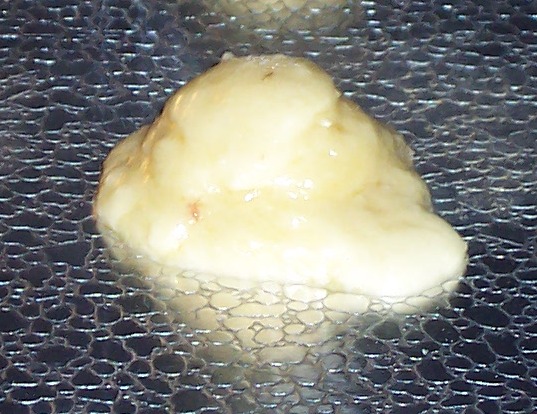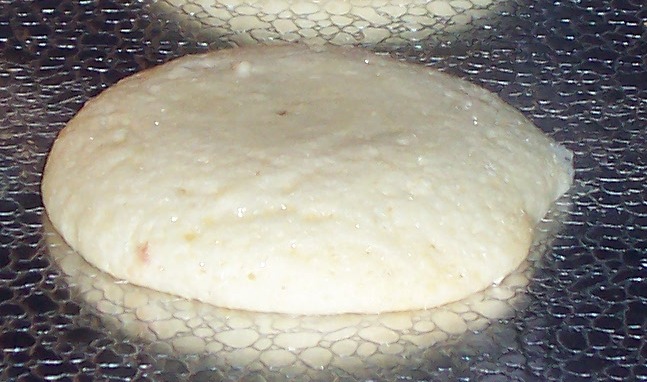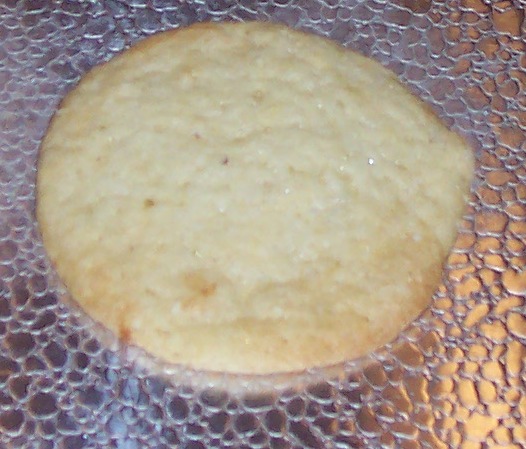RESULTS OBTAINED ON
MODELLING THE SHAPE
OF A COOKIE
an Undergraduate Research Project,
funded by National Science Foundation REU grants
DMS-0352940, DMS-0647121 |
|
Rose-Hulman Math REU page |
|
Participants |
Results |
Preprints |
| When baking a drop sugar cookie, one
starts with a drop of cookie dough on the cookie sheet. As the dough
gets heated, it becomes a liquid and starts to achieves its equilibrium
shape. Then as it bakes it solidifies to its final equilibrium shape.
See pictures below. |

Drop of Cookie Dough
(becoming a liquid) |

Cookie Baking
(attaining shape) |

Baked Cookie
(cooling to final shape) |
PROBLEM:
Once the cookie is baked, can one recover the shape of the cookie
knowing only its wetted surface (the region that it is in contact
with the cookie sheet), and properties of the cookie dough (density,
stiffness) and the size (volume) of the cookie? |
|
|
General Modelling Results:
- (with Hari Ravindran) Fit of Sessile Drop
Model to Vanilla Wafers. Model seems to be accurate
at least to accuracy of measurement at least for circular vanilla
wafers. Question is model accurate for elliptical wafers? Preliminary
investigation indicates that model remains accurate. Some investigation
on the structure of the level curves.
- (with Robert Lemke Oliver and Yvette Monachino)
Investigation of the Location of the Maximum of a Linearized
Cookie. Question: Given a domain U, where in the domain
is maximum height of the cookie located. The study is on a linearized
version of a sessile drop, i.e. a variant of Laplace's equation.
The location of the maximum is determined by various methods.
- (with Erik Perkins) Formulation of Cooling
Model. Modelling a cookie as an elastic body, this
invesitgation proposes a modification of the Navier equations
for the cooling of a cookie. The deformation of the elastic
body is driven by the heat equation by coupling the thermal
properties of the elasticity to the temperature of the cookie
and using heat to determine the interior pressure of the gas
bubbles supporting the cookie.
- (with the 2007 REU group) Use Capillary Surface
to Model the Shape of French Bread as example of a
1-D cookie. The model is at least as accurate as an elliptical
fit of data from slices of bread.
- (with Matt Lundy and Kyla Quillin)
Investigation of Structure of Periodic Bread Shapes
An investigation into periodic capillary shapes under gravity.
|
Elliptical Cookies
- (with Emma Norborthen) Level Curves of Elliptical
Cookies Determine whether level curves of elliptical
sessile drops are ellipses. They are not exactly ellipses. This
is accomplished by direct calculation using Frobenius expansion
of the solution as solution to system of ODEs and symmetry of
an elliptical sessile drop. The solution of the ODE is shown
to be close to a solution of the PDE by numerical results lending
evidence that the solution is close to elliptical.
- (with Meredith Perrie) Oval Cookies Determine
whether level curves of elliptical sessile drops are ellipses.
Alternate approach. Look at Frobenius-Fourier expansion of solution
to the PDE in general. Numerical and algebraic approach to show
how close level curves are to ellipses. They are close to ellipses
if not exactly ellipses.
- (with Brian Shourd) Turnover Points for Elliptic
Cookies Determine whether the first points where horizontal
normal lines appear (vertical tangent planes) are along the minor
axis of the ellipse. Corresponding this means the highest turnover point
is on the minor axis.
|
Double Bubble Cookies
- (with Blake Hartz) Investigation into the Structure
of a Double Bubble Cookie. Is a cookie obtained by
two cookies running together modelled by a sessile drop. No.
The interaction at the crease where they run together is not
accounted for by a sessile drop. This is also a first look at
non-convex domains and the double bubble type cookie. Results
on the structure of the solution are obtained, mostly topological
in terms of whether the maximum is obtained along the crease
or in the middle.
- (with Matt Donahue and Pam Welch) Further Investigation
into the Structure of a Double Bubble Cookie. Introduction
of a crease energy and the effect of the crease energy on the
crease. Numerical results and conjectures on different aspects
of the model.
- (with Mark Pengitore) Investigation of Triple Bubble
Symmetric Cookies Qualitative investigation of the
shape of symmetric triple bubble cookies.
|